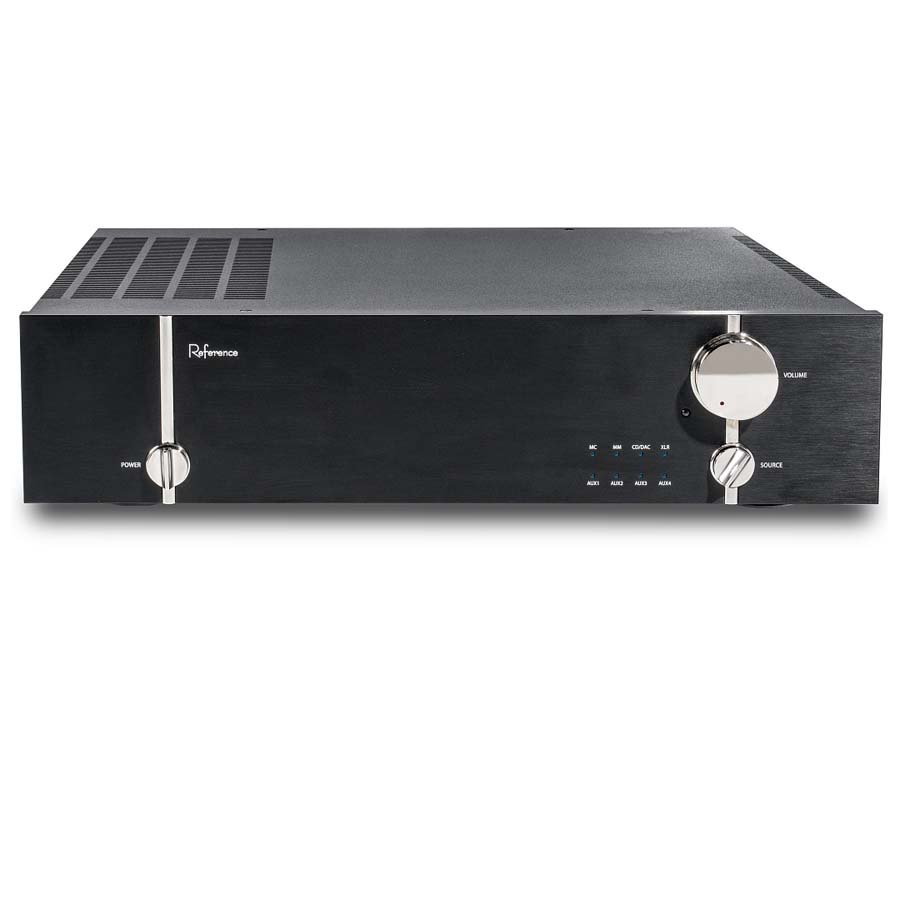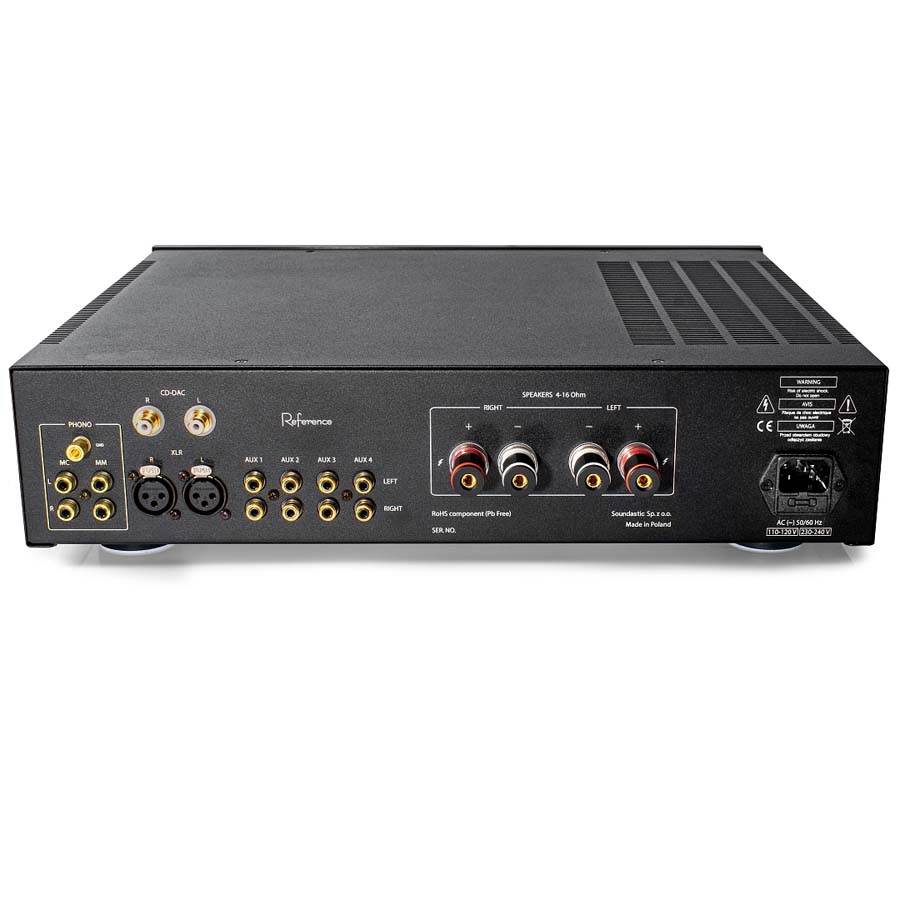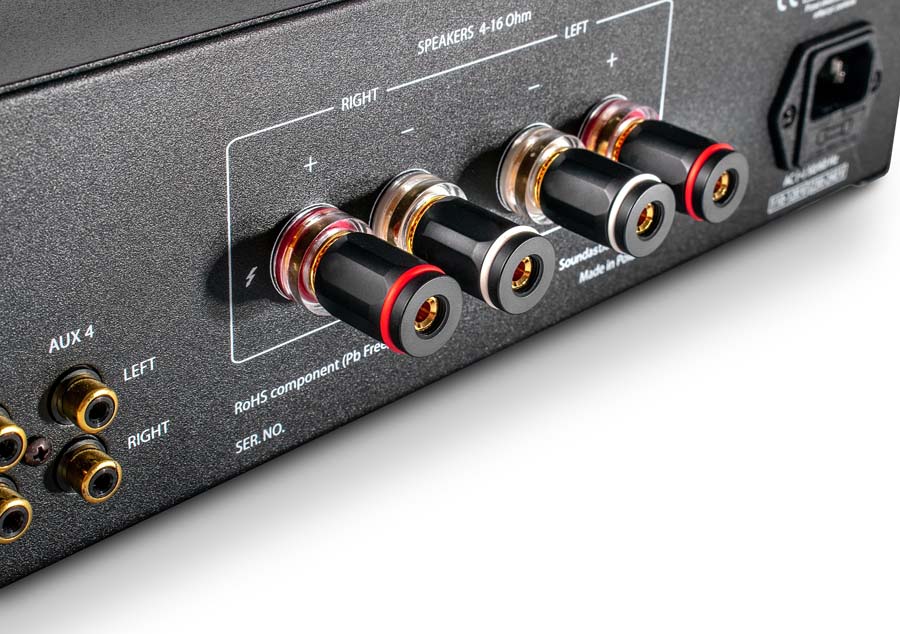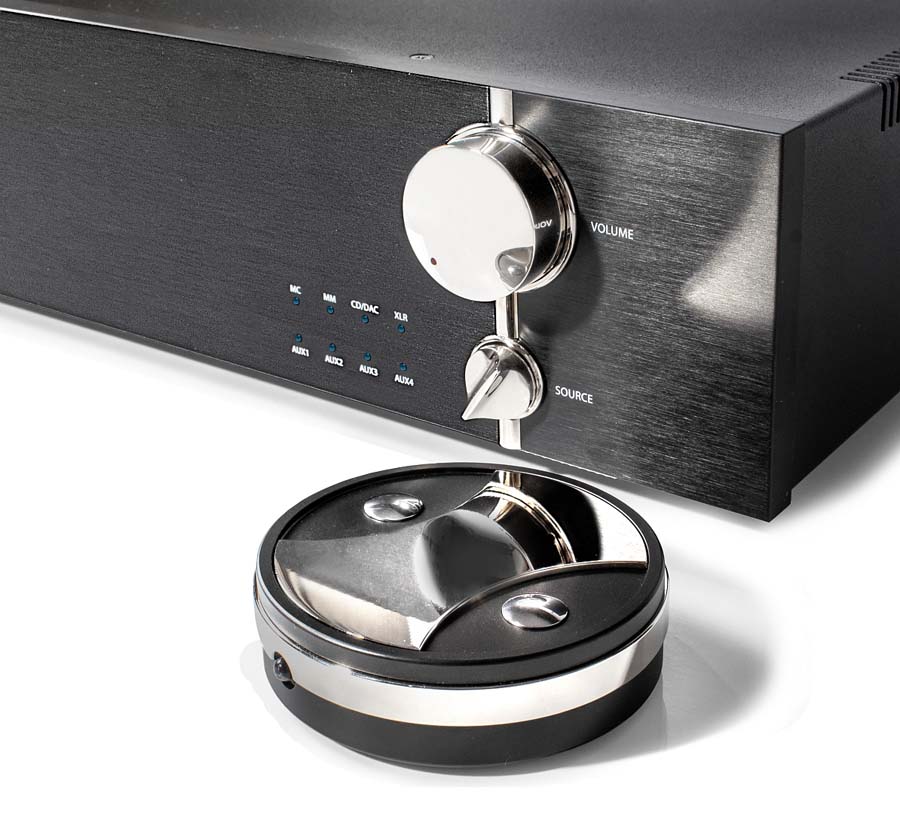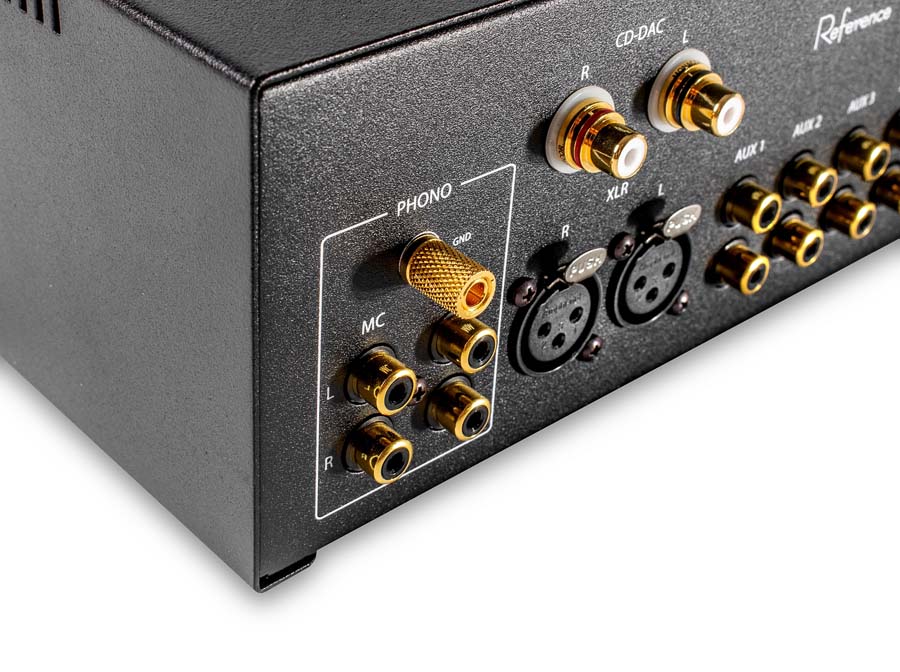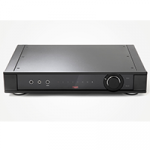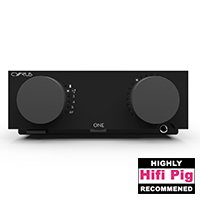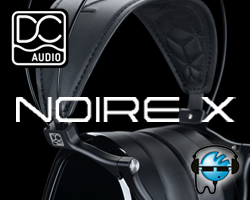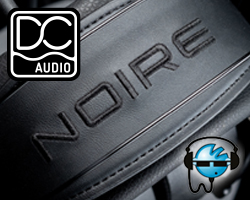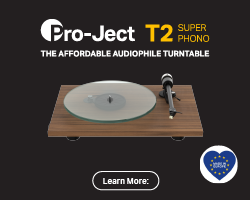SOUNDASTIC REFERENCE INTEGRATED AMPLIFIER REVIEW
Stuart Smith tries out the €6500 Soundastic Reference integrated amplifier from Poland.
Soundastic was a new name to me, but looking a little further into the company it seems that they are actually what was Struss Audio, which I know (or knew) well. So, let’s assume that this is Struss Audio with a new, and more difficult-to-remember name, and we have a Polish company that has over forty years of experience in the production of HiFi amplifiers. Why the name change, I have no idea!
One thing on the Soundastic website that caught my attention was that Zdzisław Hrynkiewicz-Struss originally went into amplifier production through his love of rock music, specifically the Rolling Stones, and a desire to offer Polish folk in the ’70s an affordable and yet high-quality home amplification solution, though the website also says that his first amplifier sold for the same price as a Fiat 125 motorcar. Zdzisław also worked for Studer and was responsible for the reading track circuit on the legendary Revox B77 reel-to-reel machine. However, Struss proper started in 1995 with the Struss 01-2 and then in 1997 with the Struss 140 amplifier. Since then Struss has produced a number of amplifiers and in 2012 the company implemented an industrial production process to ensure consistency across their amplifiers. In 2015 the ownership structure of Struss Audio changed and there was a move to make their products more widely available, and in 2017 they adopted the Struss Audio name and introduced the DM 250 amplifier. In 2021 the name changed to Soundastic and they launched the Reference amplifier we have in for test here. I have no idea at all why the name changed but I do find the current name (Soundastic) difficult to remember.
SOUNDTASTIC REFERENCE INTEGRATED AMPLIFIER BUILD AND FEATURES
The amp arrived well-boxed and looks well-built, though one of the small silver trims to the front of the amp was missing. Now I wouldn’t actually have noticed it was missing but I found the small piece in the packaging box and realised what it was. However, apart from this minor and easily fixable issue, the amplifier itself looks well put together and well-finished. The round remote is a bit of a treat to look at and it’s nice to see a company understands that it’s the remote a user is likely to have the most contact with when using an amplifier in a day-to-day situation. However, the remote didn’t work and I assumed this was because of the battery being flat, but upon removing the back cover it was the housing that holds the battery that had come away from the circuit board. Both these are relatively trivial issues but ones that need addressing, particularly given that this was a sample the company knew would be getting a review. Whatever, it comes with a 24-month guarantee so any issues you may have will get fixed. In addition and since writing this review, Soundtastic tell me they have changed the design of the remote.
The amplifier is a fully featured integrated with a Moving Magnet and Moving Coil-enabled phonostage onboard. I like that there are both MM and MC cartridges being catered for! However, there is no onboard DAC which now seems to be fairly common on modern-day integrated amplifiers. This latter point you can look at one of two ways; it’s a sensible omission that allows users to use the DAC of their choice and avoid the chance the amp will become obsolete as the never-ending stream of new DAC technology comes onto the market, or that given it’s an integrated being sold in 2022 it really should be embracing the streaming “revolution” and have a DAC built-in. Personally, I fall into the previous category and feel that it was a wise move not to include a DAC – phonostage tech moves slowly whilst DAC technology changes by the week.
You get a set of RCAs and XLRs that are dedicated to your main source and then four sets of RCAs. The speaker binding posts are good quality and feature anti-shorting collars.
To the front you have a power knob to the left and then to the far right a volume knob (ALPS Blue Velvet) and a source selector with LEDs to let you know what source you have selected.
All in all the amp looks nice, but for my taste, I find the shiny chrome a bit blingy – YMMV!
It’s the inside of the amplifier that counts and with the Reference, we have a dual mono-circuit where both channels are wholly independent of each other, and adding to the weighty 16KG are not one but two toroidal transformers.
The amp is Class AB and outputs a very healthy 140W into 8Ω and 260W into 4Ω using only JFET transistors and symmetrical inputs and whilst there are 4 Nippon Chemi-Con capacitors onboard (power supply) the signal circuit itself does not employ any capacitors. We are also told that the amplifier has zero supply voltage distortion with the benefit of reducing non-linear distortion and improving overall frequency response.
There’s not really much more to add than to say that the Reference looks good in a pretty standard amplifier kind of way and with flashes of bling for those that appreciate such things. It’s a standard sort of size (430 x 95 x 358mm) and comes with a 24 month warranty and so the issues with the remote and trim will have been sorted quickly – we just don’t have time to send kit back given any one product requires running in and then extensive listening.
LISTENNG TO THE SOUNDASTIC REFERENCE AMPLIFIER
For digital files the source used was an Auralic Aries G1 into a LAB 12 DAC. For analogue I used a Technics 1200 G Turntable with the excellent Hana Umami MC cartridge and Vertere Sabre MM cartridge. Speakers for the duration were Diptyque dp77 Anniversary Loudspeakers and cables were by Chord Cables, Atlas, Lab 12 and Tellurium Q.
The Diptyque speakers are an excellent loudspeaker but they do require a good and powerful amplifier to get them on song, and whilst I try most amps that come in on these speakers as a starting point, not all are able to drive them correctly and in many cases I end up moving to something easier to drive. This is a feather in the cap of the Soundastic Reference and at no time did I see fit to change the speakers out for something more amplifier-friendly.
My first thoughts when listening to the amp during a “burn-in” period using the digital sources was that it sounded nice and balanced throughout the audio spectrum and with a solid and stable bass performance. This period of burn-in is something we do with all products that come in for review and whilst we never listen particularly critically during this period it’s impossible not to take a listen and get a “feeling” for a product’s main overall characteristics.
At low levels the amp was excellent in providing a full representation of the sonic image. This is a very good thing and somewhere that many amps can come undone. Despite the speakers I chose liking a bit of power, it was clear that it was the amplifier that was in control at low level. I also found that even at these levels the amplifier felt detailed, open, and wide. I’ve been hammering Dusty Kid’s III for some time now and I find it an excellent test album and one thing I did find particularly enjoyable was the way a particular “squiggly” noise on Yota Wave And Antares came from well beyond the speakers. Now, this is a factor down to the speakers in the main, but unless the speakers are being properly controlled then this is lost. Small details in the mix (and from effects) were easy to distinguish and pull from the mix and I found myself really drawn into the record. Let’s face it, the majority of people will only get to turn their systems up to “realistic” volumes on rare occasions and so low-level performance is a must for a modern amplifier and the Soundastic performed very well in this test (not a million miles away from our Krell KST100 amp) and I thoroughly enjoyed it.
On the volume front, I never managed to push the volume control beyond the 12 O Clock position and so this shows that there is ample power here to drive speakers to very loud (too loud) levels whilst still being fully in control. Again, whilst this may seem like overkill on the part of Soundastic, it is actually a very good thing and ensures that the Reference amplifier has plenty of headroom to never need to be pushed to its limits of performance where clipping and general nastiness can creep in.
Listening to Blondie’s Heart of Glass, a deceptively complex pop record, again proved to be a treat with the Reference managing to convey subtle details of the bubbling synth lines and being underpinned by the solid drumming of Clem Burke. This solidity of the rhythm tracks that the amp conveys leads to a pleasing and robust sonic signature that really will appeal to those that enjoy electronic and rock music. What is also pleasing here is that whilst the bass is robust it is not overblown or out of keeping with the rest of the music. Continuing the Blondie theme, Sunday Girl has a lot of small details that the Soundastic allows you to hear separately but as part of the whole, and this is another positive aspect of the amp’s performance. This feature is further emphasised when listening to Body Shock’s Sleepless (Bonzai Records), a rave tune from the 90s with a pounding bass kick but with many more subtle details within the mix. In fact, everything I listened to in the rock, pop, dub, and electronic genres was excellently rendered by the amp and sonically I highly recommend it for these styles.
Carole King’s Tapestry is a record that gets a good deal of play at HiFi Pig Towers, despite us having a bit of a reputation as (elderly) rave-kids. In comparison to our Krell and Merrill amplifiers, I found that the Soundastic lacked a little in the way I connected with the album. There is a good degree of detail to the vocal and other elements of the album, but when compared to the two reference amps (they are references for a reason) I found the Soundastic a little lack-lustre and not as polished, particularly through the mids. This would certainly not be a deal-breaker for me with this amplifier and it is in no way terrible, but whilst the flute, guitar and hi-hat hits on So Far Away are all there and sound excellent, it was the vocal that I found to be a little recessed. However, there’s a bit of bass guitar around 3’30” that sounds fantastic and makes me sit up and take and notice.
Buddy Rich’s Big Swing Face Live ups the ante a little and shows just how nimble, agile and dynamic this amplifier is. Horns soar and the piano sounds intricate and correct. Again on this track there is an underlying feeling of there something being so right about the rock-solid rhythm the amp brings to the listening experience. This record is live and it sounded live, particularly when you pushed the volume a little. This sense of timing and pace were evident too on The Dave Brubeck Quartet’s Jazz Impressions of West Side Story with me finding myself tapping my pen along to the syncopated hats on I Feel Pretty.
Doug MacLeod’s There a Time is an excellent recorded and performed blues record and the Soundastic performed excellently throughout, though, as with the Carole King record, I found that the vocal seemed to be a little bit further back in the image than I would have liked, or than is evident with our reference amplifiers. The detail on the steel-stringed guitar was, however, wonderful on tracks such as Run With the Devil. And this is where I found the Soundastic a teensy bit frustrating – everything sounds great and then the vocal doesn’t have the same kind of projection as I’m used to. Now, this can be taken a couple of ways; there is one school of thought that will say that this is a more natural and organic-sounding amplifier than our reference amps and then others that will say that it’s a smidge lacking. Whatever, I wanted to explore this aspect of the amplifier further and so pulled out John Martyn’s Solid Air from the virtual record shelf and listening to this record I still found myself in two minds about the vocal performance of the amp; detail and small inflections are all there, for sure, but there’s that slightly laidback aspect going on again and I find myself wanting to push the volume a little higher. Now, here’s an anomaly for you; On Go Down Easy from Solid Air, I actually found myself sit up and take notice of the vocal in a good way. It sounded natural and laidback (as it is) with the nasal inflection in Martyn’s vocal style coming through excellently. Likewise, on May You Never and on a number of Nick Drake tunes!
SOUNDASTIC REFERENCE PHONO STAGES
I would have liked more control of the phonostage, but let’s face it, what integrated amplifier at this price level offers much more than basic inputs and we should be well happy that the Soundastic offers inputs for both Moving Coil and Moving Magnet cartridges.
For all but the most demanding of vinyl enthusiasts, the onboard stage will be more than satisfactory and both MM and MC provide enough gain and allow a good degree of the character of the cartridge to come through.
QUIBBLES
Dynamically speaking this amplifier is hugely accomplished and in that respect, I thoroughly enjoyed it, with my only quibble, and I’m aware I’ve laboured this point a bit, being something in the way it renders vocals on more laidback productions. It’s in no way bad in this respect, it just seems to lack a bit of verve and excitement, though, as I’ve said, some will find this presentation to be a little more to their own taste. Personally, I found it lacked a bit of punch, but some will see this as refinement and this will add to the amp’s audiophile credentials.
Timing with this amplifier is impeccable and the way it plays rhythm and bass is brilliant and highly engaging – on a par with our reference amps.
Trim falling off and a damaged remote is far from ideal, but these things happen in transit. The remote issue really disappointed me because I wanted to wax lyrical about how excellent and well-thought-out this was as it did look pretty cool – I have a thing for remotes! Soundtastic tell me this remote has been replaced with a new model!
No way to change loading etc on the phonostage section. This is not unusual on integrated amplifiers and is a minor quibble.
No headphone output.
CONCLUSION
This is an excellent amplifier with excellent control, particularly in the bass’ control and speed. This leads to a delightfully entertaining listening experience on the vast majority of music. It is particularly entertaining on more lively albums and excels with electronic, pop, and rock music.
Dynamically the Soundastic is hard to fault in any way and it’s a terrifically toe-tapping amplifier to listen to.
My thoughts on the way it performs vocals on some tracks stand and I did put a lot of records through the amp to test this and to make sure I wasn’t being unduly harsh or critical. However, dear reader, it must be understood that however impartial a reviewer may try to be, there is always going to be a degree of personal taste that comes into play and some may actually find this presentation more pleasing – it’s certainly not horrible by any stretch of one’s imagination and on one or two tracks I really did think it complemented the vocal signature of the artist. However, on the whole I found it a little too smooth and rounded in this aspect.
Treble detail is excellent and without any degree of harshness to it.
A couple of finishing/packaging/transport issues with the trim and the remote.
Overall I really liked this amplifier and what it does. At low levels it really is superb. When pushed louder it feels as though it is never going to run out of steam. However, it’s one of those that you need to listen to yourself to see if you get on with, and even prefer, what I consider to be quibble-worthy aspects of its performance.
I am giving this amplifier 5 Hearts with the caveat that the remote and trim issues are easily fixable or have already been addressed. The recessed mid/vocal on some recordings may be to some folk’s preference.
AT A GLANCE
Build Quality and Features:
Onboard MC and MM phonostage is an excellent addition
No onboard DAC – as mentioned this can be seen as a good decision by the company
Weighty and seemingly well built
A bit of trim fell off in transit
Remote was broken presumably in transit
Ample inputs
No headphone amp
Sound Quality:
Rhythm and timing are superb and this a solid foundation on which the amplifier builds
Highly detailed throughout the frequency range but never harsh
A little too laidback for my taste on some vocals…and then excellent on some! I cannot emphasise enough that this will appeal to many!
Took total control of the speakers and allowed them to throw an excellent stage spatially
Good at low-level listening volumes
Ample power to drive pretty much anything and in pretty big spaces
Value For Money:
It’s not a cheap amplifier but neither is it in the silly-money arena. Personally, I think it’s pitched about right and performs very well for this price for a new amplifier
We Loved:
Bass and rhythm are rock solid and driving
Fab at low levels
Enough grunt to power difficult speakers
Well featured with good phonostage few will want to add to
We Didn’t Love So Much:
I have trouble remembering the name and want to call it SoundTastic or Eurotastic
Vocals were a bit laidback overall for my personal taste on some tracks
Price: €6500
Elevator Pitch Review: This Polish integrated amplifier with a good pedigree is well featured and has an onboard MC and MM phonostage but lacks a DAC and headphone output. The review sample had a couple of “finishing” issues but overall the amplifier is very nicely put together and very weighty. Sonically it majors on rhythm and pace and is an wonderfully engaging listen that only really falls short on some vocal tracks where it seems to push mids back in the mix.
Stuart Smith
Specifications
Power: 8 Ω / 2 x 140 W (CLASS AB) 4 Ω / 2 x 260 W (CLASS AB)
Minimum impedance load: 1 Ω (instantaneous)
Output impedance: STATIC.
Output impedance: 40 VA – 1200 VA (PEAK) –
Distortion – THD: 0.05% at 1 W / 8 Ω, 0.02% at 120 W / 8 Ω
Frequency response: 5 Hz – 100 kHz – 3 dB / 1 W / 8Ω
Non-linearities in the frequency band: 10 – 30,000 Hz: ± 0.01 dB
Slew rate: 150 V/μs
Signal – noise ratio: 130 dB (IHF – A)
Inputs: 4 x universal inputs – RCA XLR Amphenol
1 x separated CD / DAC – RCA
1 x phono MM – RCA
1 x phono MC – RCA
Potentiometer (volume): Alps – Blue Velvet
Transformers: 2 x toroidal, 500 VA each
Capacitors filtering the supply voltage: 4 x 12 000 uF – Nippon Chemi-Con
Remote control: RC5 code (volume)
The REFERENCE / Ultimate / DM-250 amplifier fulfils all requirements and standards valid in the EU
Net weight: 16 kg
Dimensions: 430 x 95 x 358 mm
Manufacturer’s warranty: 24 months














































